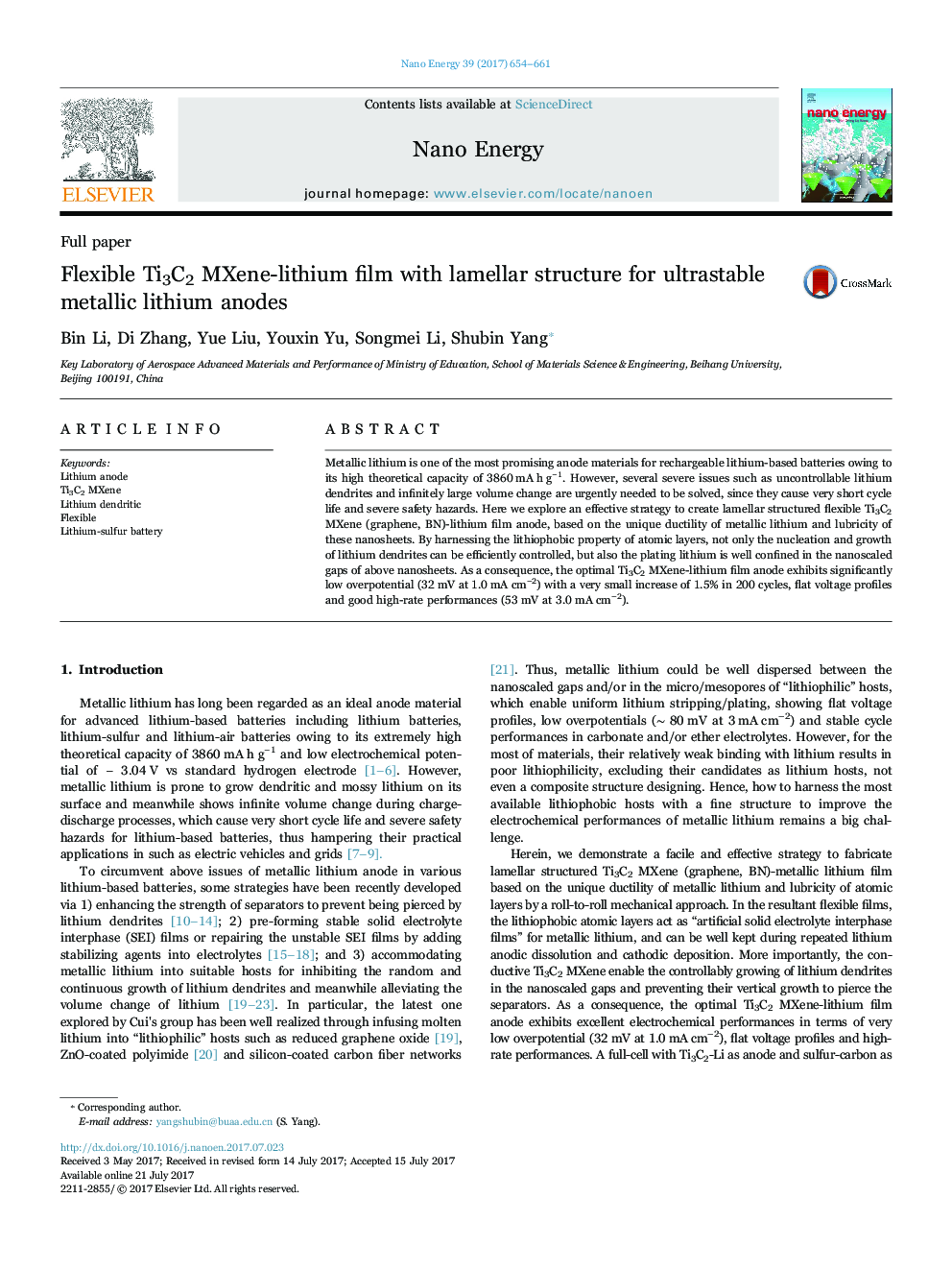| Article ID | Journal | Published Year | Pages | File Type |
|---|---|---|---|---|
| 5452399 | Nano Energy | 2017 | 8 Pages |
Abstract
Metallic lithium is one of the most promising anode materials for rechargeable lithium-based batteries owing to its high theoretical capacity of 3860 mA h gâ1. However, several severe issues such as uncontrollable lithium dendrites and infinitely large volume change are urgently needed to be solved, since they cause very short cycle life and severe safety hazards. Here, we explore an effective strategy to create flexible Ti3C2 MXene-lithium films with lamellar structure based on the unique ductility of metallic lithium and lubricity of MXene. By harnessing the lithiophobic property of Ti3C2 MXene, not only the nucleation and growth of lithium dendrites can be efficiently controlled, but also the plating lithium is well confined in the nanoscaled gaps of above Ti3C2 MXene. As a consequence, the optimal Ti3C2 MXene-lithium film exhibits significantly low overpotential (32 mV at 1.0 mA cm-2) with a very small increase of 1.5% in 200 cycles, flat voltage profiles and good high-rate performances (53 mV at 3.0 mA cm-2).305
Related Topics
Physical Sciences and Engineering
Energy
Energy (General)
Authors
Bin Li, Di Zhang, Yue Liu, Youxin Yu, Songmei Li, Shubin Yang,
